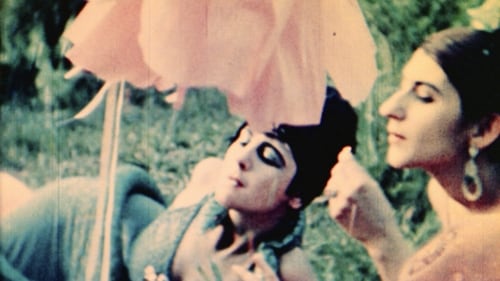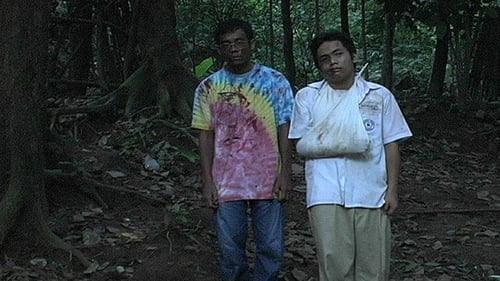Mothers (1967)
Жанр : документальный
Время выполнения : 40М
Директор : Toshio Matsumoto
Краткое содержание
Documentary about the relationships between mothers and their children.

Все начинает идти неправильно, когда имеющий дурную репутацию, преступник Фрэнк Лоис и его жалкая банда воров совершают свою последнюю и самую большую кражу. Фрэнк и его сообщники по преступлению оказались в тюрьме, полиция деньги так и не нашла. Из этой истории родилась городская легенда. Со временем легенда обрастала дополнительными подробностями, и количество украденных денег росло с каждой минутой, 1,5 или все 10 миллионов! Теперь все мошенники, воры и всякое мелкое жульё ищут исчезнувшие миллионы. Так существуют они — или это только очередная городская легенда?

A blind masseur kidnaps young women and kills them and then make sculptures of them, while a mysterious dwarf spreading severed body parts around. Detective Akechi Kogorô investigating crimes.

The feature length Normal Love is Jack Smith’s follow up to his now legendary film Flaming Creatures. This vivid, full-color homage to B-movies is a dizzying display of camp that clearly affirms Smith’s role as the driving force behind underground cinema and performance art of the post-war era. The cast includes Mario Montez, Diane de Prima, Tiny Tim, Francis Francine, Beverley Grant and John Vaccaro. Smith was known to constantly re-edit the film, often during screenings as it was still unspooling from the projector. This print has been restored under the supervision of Jerry Tartaglia and is provided by Filmmakers Co-operative in New York City.

Two chaotic series of images, one for each eye. Hipster living, malformed fetuses, war, arts events and pop culture stands for the material.

While extracting and polishing their blocks of stone, stonecutters used to say “the stone is coming to life". This paradox provided Matsumoto with the best metaphor for what making a film is all about. In his opinion, filmmakers work images in the same way that stonecutters work stones.

Santamaria and Urtigo are two bandits on the run, one is white, the other black. Santamaria is a mystical visionary and believes in the imminent coming of a purifying angel. Urtiga, his inseparable companion, is a simple-minded and ingenious man who follows Santamaria around and participates in the crimes he commits. The two bandits take over a house after kidnapping its owner and his girlfriend.

Synchromy No. 2, synchronized to the "Evening Star" aria from Wagner's Tannhäuser, uses a statue of Venus to represent the star.

Photographer Rudy Burckhardt shows us the ebb and flow of people rushing about Manhattan. Equally exhilarating in his novel approach to snap images quickly on the run, a method he inaugurated and that continues to the present day. In film, he added slow and fast motion, split-screens and superimpositions to his repertory.

A short scene of a mother and her little son playing ball games on a set of steps together.

Christopher Young experiments with objects and their uses.

Mix-mastering history, the paranoid thriller, the documentary and the landscape film, pic tells of very different fates for two sets of brothers in oppressive Philippine settings.

A spoof of the early talkies and their supposedly wooden line readings.

'Ki or Breathing' is a spare concoction assembled from slow motion shots of nature and set to a score by the much-acclaimed Tohru Takemitsu.

There's more to picture than meets the eye in this journey into oriental metaphysical imagery. Starting (in a very Christian manner) with the Word, the film draws an explosion of visible forms, as if a sign of the shattering of shapes in the mundane world. But time is cyclical, of course, and what was once a multitude of sensible realities must eventually return to the Word and, finally, to sheer Color. (Sound of Eye)

The Weavers of Nishijin captures the process of traditional textile manufacture in Nishijin.

Adaptation of an avant-garde play about Rhoda, a hysterical heroine who feels oppressed by the people around her. She suffers through her birthday party, goes to see a doctor, plans a vacation, argues a lot and even breaks the fourth wall.

Съемочная группа приезжает в Венецию для съемок экранизации трагедии «Герцогиня Мальфи». Они поселяются в местный отель, где в подвале обитают каннибалы, замышляющие полакомиться новыми постояльцами.

The fictional town of Villa Romero is the set upon which the events of Spain's civil war play out. Villa Romero is home to Vandale (Mariangela Melato) a witch, count Cerralbo (Bento Urago) a powerless land baron, and his four sons. Three of Cerralbo's sons are ruthless sadists who pillage the countryside, but the fourth, Goya (Ron Faber), is an artist challenging authority and the church.

An urban husband and wife travel to the jungle and learn just how precious their relationship is.

Parabola is a celebration of film’s ability to create new ways of seeing the forms around us. Creating juxtapositions between light/shadow, stasis/motion, and form/music, this black-and-white short invites us to see the parabolic curve, or “nature’s poetry,” as both invigorating and beguiling.













